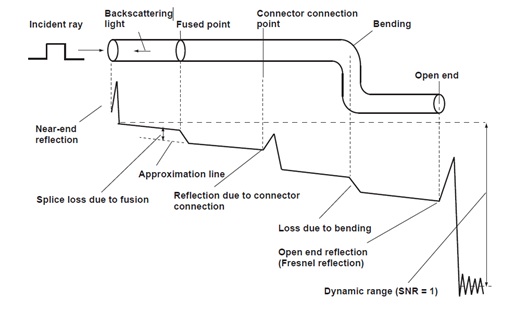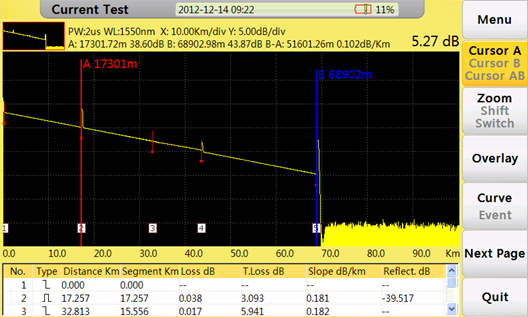IOLM is a technology that automates the process of configuring the OTDR to capture and analyze all the information on a fibre regardless of its length and the number of connectors and splices on the span. The OTDR with IOLM can directly read the cable / fiber length and attenuation, can automatically complete the test, and generate objective pass / fail results.
There are two tiers, or “levels”, available for certifying fibre optic cabling.
The first certification is a measurement of the total insertion loss (previously called attenuation) of the cabling from one end of the link to the other, The second certification provides loss information about each component of the link.
An OTDR (optical time domain reflectometer) is used to perform the second certification. The primary advantage of the second certification test is that it provides information about each connection, splice and cable segment in the link and offers a graphical representation of the components and their performance.
When testing newly installed cabling the report is a snapshot of the system that can be compared to later tests to identify any changes in the cabling. An OTDR is unrivalled for troubleshooting because it shows the operator exactly where faults are located in the cabling, expediting the repair process.
Pulse Width has the most impact on measurement results, the pulse width is the duration of the laser pulse for each sample during the trace acquisition. A short pulse width provides excellent resolution and can detect events that are near each other at patch panels where there may be just a few feet between connectors. The downside to a short pulse is that it injects a small amount of power into the cabling and cannot measure long distances. In some cases, the OTDR may not be able to detect the end of the cable if there are high loss splitters on the link like those used in PONs (passive optical networks).
Increasing the pulse width will provide more power to measure long cables or “punch” through splitters at the expense of potentially missing connectors or splices in the link. To best test a link, a technician can perform multiple tests, each with a different pulse width so that connectors and splices near the end of the cable can be measured as well as the entire length of the cable for an accurate end-to-end loss measurement.
Compromise
Ultimately, obtaining the perfect, single OTDR trace for a given cable is a matter of compromise that boils down to resolution (sharpness) versus dynamic range (maximum loss that can be measured). In the past, the only work-around was to create multiple reports for each fibre with the OTDR set to different configurations.
One test would be performed with a short pulse width to accurately measure individual connectors near the OTDR and another would be run with a long pulse width to provide enough power to measure through splitters and see all the way to the opposite end of long cables. Then, the same tests are performed at a second wavelength so that macrobends (tight bends or kinks) can be identified and differentiated from splices because the loss of a bend is wavelength dependent where the loss of a splice is not.
Using this method there can be four or more reports for each fibre tested. While this method captures all the information about the various events on the fibre, trying to make sense of it all it all to determine whether the fibre passes or fails is not a trivial task. Not to mention the time it takes to reconfigure the OTDR for each of the different tests which takes a toll on the productivity of high paid technicians.
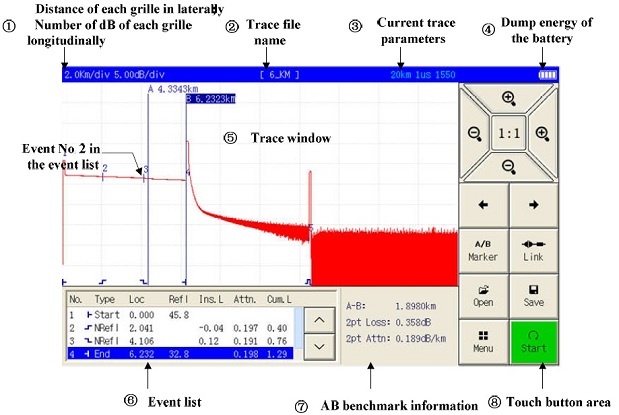
BAUDCOM OTDR testing result
iOLM Simplifies OTDR Analysis
Intelligent Optical Link Mapping (iOLM) is a technology that automates the process of configuring the OTDR to capture and analyze all the information on a fibre regardless of its length and the number of connectors and splices on the span. Using iOLM, the OTDR will perform multiple tests using different configurations and combine all resulting data into a single report that provides the user with a simple PASS/FAIL result for even the most complex optical links.
While an OTDR with iOLM technology can generate a traditional OTDR trace for those who want it, the key to simplifying OTDR analysis lies in changing the way we look at OTDR test results. Instead of a trace that requires years of field experience to interpret, iOLM generates a linear diagram using easy-to-understand icons to represent connectors, splices, splitters, macrobends and other events on the fibre being tested. This allows a technician with almost no experience operating OTDRs to certify fibre cabling and understand exactly what is happening during each test.
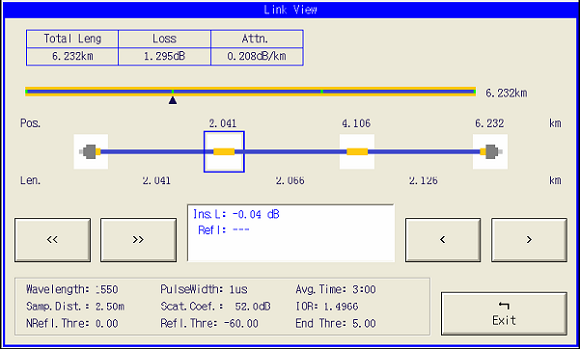
For good cables that pass the desired test standard, each event will be represented by a green icon identifying the type of event and a number above and below the box indicating the distance to and power loss of the event.
Should a test fail, the offending event will be represented by a red icon with the distance and loss, as well as recommendations on how to correct the problem. With iOLM, a technician can quickly and easily identify, locate and correct problems on any fibre link regardless of its complexity.
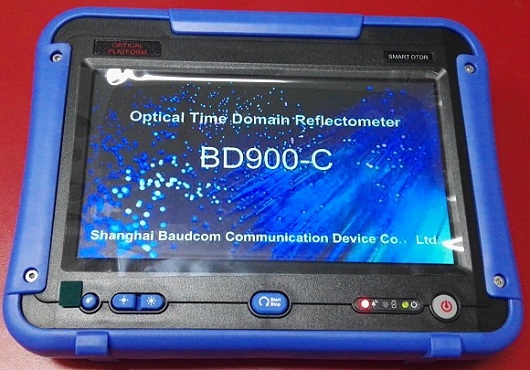
BAUDCOM OTDR have good IOLM function,which smartly test the fiber function.
